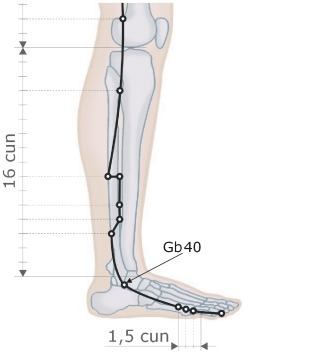
Meridians and Acupunture Points
Databased reference site for practitioners and students
DEMO VERSION - In this version full access is given to the first sections of each chapter. For example in the meridian chapter you have full access to the Lung and Large Intestine meridians. The complete version is available only upon purchase.
FULL VERSION - If you want to use the full version you have to pay a yearly fee of EUR 24,-
This reference site consists in the exact description and graphic representation of all 361 acupuncture points plus additional 18 extra points.
 The file structure allows on the one hand the systematic study and reference and on the other hand the free search for e.g. indications, disorders and other terms.
The file structure allows on the one hand the systematic study and reference and on the other hand the free search for e.g. indications, disorders and other terms.
All points are represented with their exact location- with muscular, skeletal and skin depiction, their indications (area of application) by Western and Chinese health theory, as well as additional remarks.
Almost all acupuncture points lie on the twelve Principal Meridians (Jing, Regular Meridians), which connect the inner meridian branches with the associated Yin and Yang organs. The main meridians run in pairs, both on the left and on the right side of the body; only the Large Intestine Meridian is an exception and crosses over in the face to the other side of the body.
These 12 Regular Meridians are Lung (LU), Large Intestine (LI), Stomach (ST), Spleen (SP), Heart (HT), Small Intestine (SI), Bladder (BL), Kidney (KD), Pericardium (PC), Triple Heater (TH), Gallbladder (GB) and Liver (LV) meridian
In general, the Yin meridians flow on the inner side (palmar, medial) and the Yang meridians on the outer side (dorsal, lateral). The Yin meridians: Lung, Heart, and Pericardium flow from the chest area on the inside of the arm to the hand. The Yang meridians: Large Intestine, Small Intestine, and Triple Heater- flow from the hand up the outside of the arm to the head. From the head the Yang meridians: Stomach, Bladder, and Gallbladder- flow down to the foot (the Stomach Meridian ventrally, the Bladder meridian dorsally, and the Gallbladder Meridian laterally). Then the Yin meridians: Spleen, Kidney, and Liver -close the circuit by travelling up the inside of the leg to the torso. In each case a Yin and Yang Meridian together form an internally and externally coupled meridian pair (internally going through the organs, externally through the meridian structure. Each of these pairs belongs to one of the Five elements/transformations. Qi, the energy (actually "Qi Xue", literally "Energy of the Blood") circulates like a wave through the meridian system.
In addition to the Twelve Main Meridians, Traditional Chinese Medicine (TCM) recognises 8 Extraordinary Meridians (Qi Jing, Ba Mai, miracle meridians). Of these only the Governing Vessel (Du Mai) and the Conception Vessel (Ren mai) have their own points. On these 14 regular meridians lie 361 acupoints (tsubos) in total. This reference site describes in detail these 14 regular meridians and the 361 acupoints ... and much more.
© 2007-2016 RenMai Verlag, Wien, Austria

